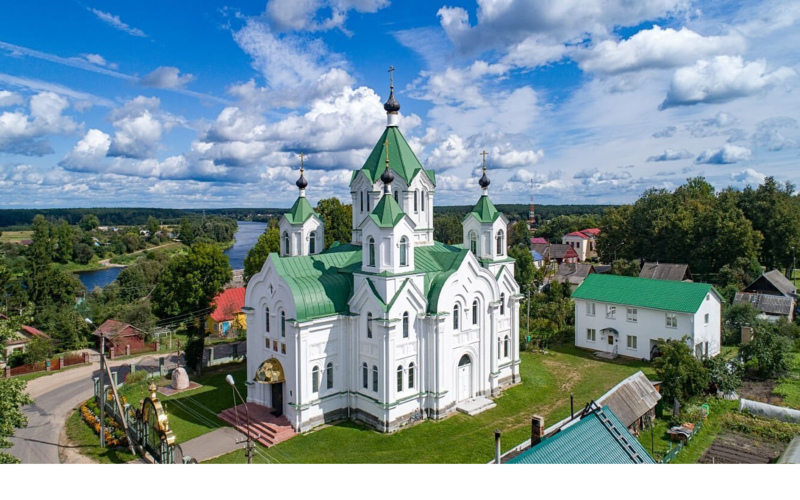- Vitebsk region, Beshenkovichi District, Beshankovichy, Uritskogo Street, 2
About the Church
The church takes the form of a cross with five octagonal lantern ‘barabans’ topped by tented roofs and onion-shaped domes. One of the towers houses a bell tower. The red brickwork is concealed beneath a layer of white plaster. Architecturally, elements of Architecture of Kievan Rus' are incorporated into the design of St. Elijah's Church. 
Inside the church, there are icons dating from the 17th to the 19th centuries, including "Saint Euphrosyne of Polotsk," "The Last Supper," "Our Lady of Kazan," "Archangel Michael," and "Christ the Savior," among others.
History
Construction of the church began in 1866 on the site of a temple founded in the 15th century. In memory of the rescue of his spouse Elisabeth from drowning on the feast day of the Prophet Elijah, Polish King Casimir IV ordered the establishment of six Orthodox churches in Belarus. One of them was erected in Beshankovichy in 1447. In 1870, a stone church was built on the site of the previous church through the efforts of Archpriest Joseph Nikonovich. Funds for the construction were allocated from the state treasury "to strengthen Orthodoxy in the region." No expense was spared, resulting in a magnificent cross-domed church with a high foundation and thick walls made of red brick.
During the Great Patriotic War (the Eastern front), the church suffered significant damage. A machine gun emplacement was installed on the bell tower, and the church was later used by the occupiers as a storage facility.
The Church Today
Despite enduring numerous tragic events, the sanctuary stood firm. Today, it unites people based on the cultural, moral, and universal ideals that Orthodoxy carries.

As of today, the church has been restored and stands as a monument of retrospective Russian architecture style.